On January 28th, 1986, 7 men and women embarked on what should have been the mission of a lifetime. As the crew awaited lift-off onboard the Challenger shuttle at the Kennedy Space Center, they were unaware of the imminent catastrophe that would violently kill them.
An estimated 40 million Americans tuned in to witness the long-awaited launch. It did not take long, though, for the broadcast to resemble a horror movie.

The Challenger shuttle disintegrated in an enormous explosion only 73 seconds after taking off, at an altitude of 48,000 feet. Watching from the ground or on TV, everybody knew the chances of survival were slim at best.
Indeed, all seven crew members perished in the Challenger explosion. The United States mourned while NASA drastically changed its safety and management procedures for future missions. In the aftermath of the tragedy, it turned out that concerns of engineers regarding the safety of equipment were ignored before the launch.
Besides the failed project and unnecessary loss of life, the challenger explosion was a preventable disaster whose terrible organization rightly provokes anger even today. We will get to know the astronauts a little better by looking at their training in the run-up to the tragedy. We will see images of how events unfolded, plus the raw emotions of the public afterward.
The Challenger Crew
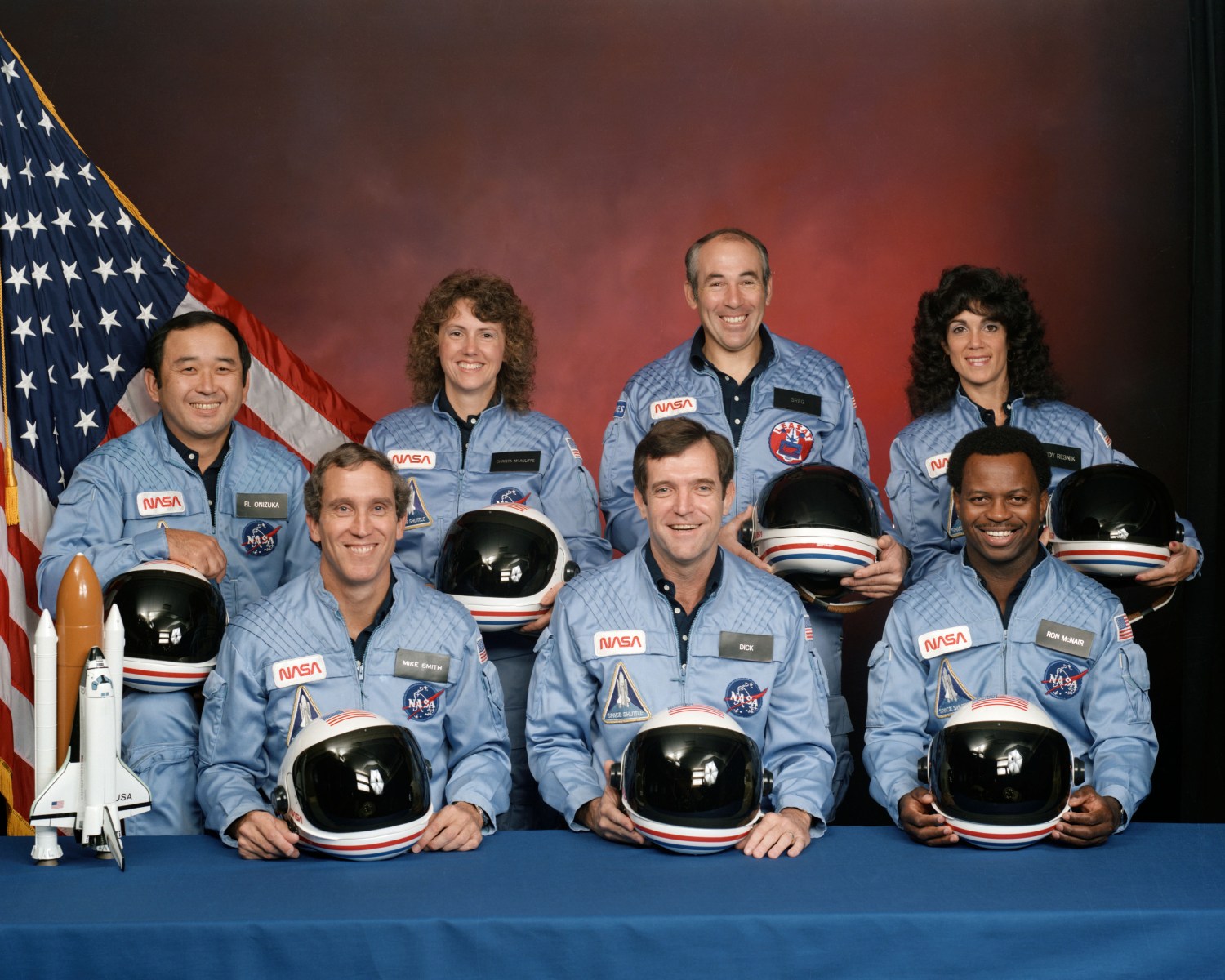
One year before the launch date, the members of the Challenger crew were announced. From left to right in the above photo, they were: Ellison Onizuka, Michael Smith, Sharon McAuliffe, Francis Scobee, Gregory Jarvis, Ronald McNair, and Judith Resnik.
Scobee was the commander, and Smith was the pilot. Onizuka, McNair, and Resnik were mission specialists, while Jarvis and McAuliffe were payload specialists. This was set to be the 10th trip into space for the Challenger orbiter. The mission's formal name was STS-51L.

Sharon Christa McAuliffe was a school teacher in New Hampshire who was selected from a pool of 11,000 candidates to become the first teacher in space. This was part of then-president Ronald Reagen's Teacher in Space Project. This program was intended to increase children's excitement about science and astronomy by allowing teachers to go into space. The plan was for McAuliffe to teach lessons while onboard the Challenger.

Unfortunately, McAuliffe proved to be the first and only participant because NASA discontinued the program in 1990. The Educator Astronaut Project succeeded The Teacher in Space project and has been running since 1998.
Ellison Onizuka was the first person of Japanese descent to fly into space. He achieved this by flying in the Discovery space shuttle in January 1985. Fellow mission specialist Ronald McNair was the second-ever African American to travel into space.
Intense Training

Here you can see four members of the crew undergoing a training session in a simulator. This looks similar to the cockpit on the Challenger.
Christa McAuliffe is seen here having a great time on a microgravity training flight. This particular aircraft had the funny nickname of "Vomit Comet." The woman floating below her is Barbara Morgan. She was McAuliffe's backup for the Challenger mission.
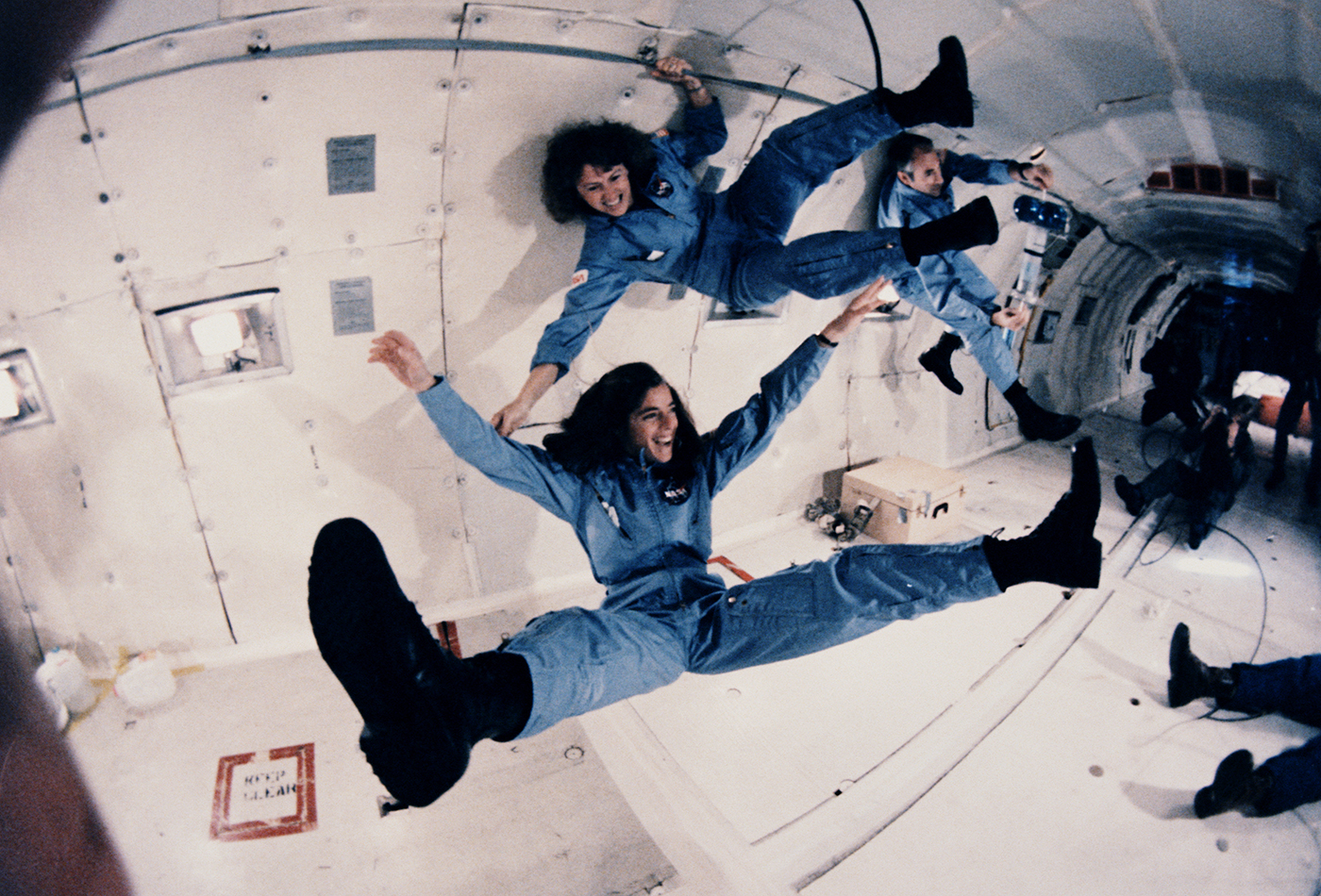
In the case of the Challenger, McAuliffe and Morgan were trained intensively for five months by NASA. Nowadays, the Educator's Astronaut Project hires teachers to become full-time astronauts for NASA ― they must give up their teaching positions.
Because of the Challenger explosion, Morgan ended up becoming the first teacher in space. She eventually achieved this feat in August 2007 as part of the STS-118 flight to the International Space Station.
Concerns About Equipment
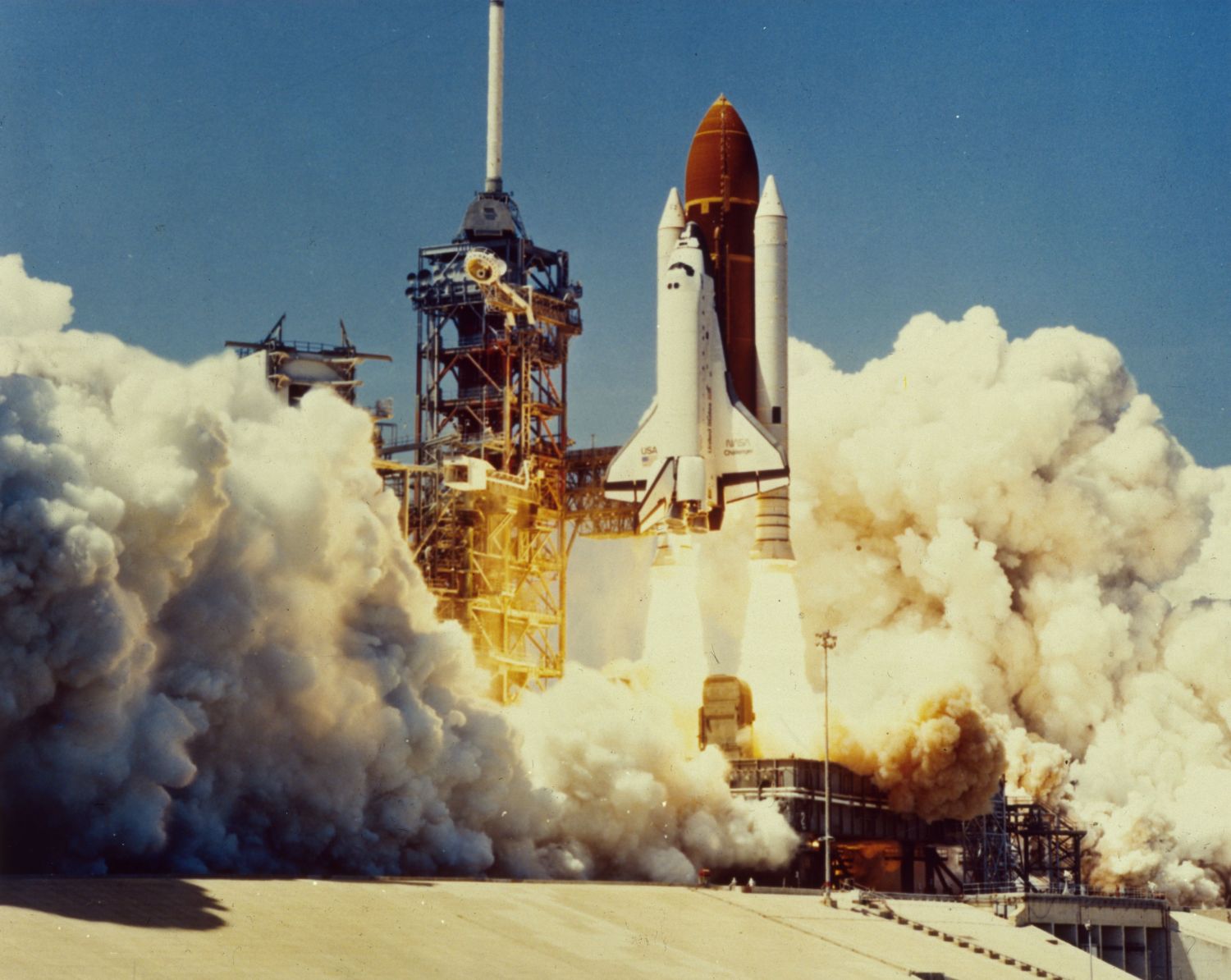
The cause of the tragic Challenger explosion was the failure of "O-ring" components. These were rubber seals used on the rocket boosters (the two slim, white cylinders above). Their deterioration on one of the boosters caused hot, high-pressure gases to exit the rocket booster. This subsequently damaged the fuel tank and the other booster, causing a massive explosion.
Concerns regarding the O-rings were known to NASA scientists as far back as nine years before the disaster. In particular, they knew that the O-ring material would become brittle at low temperatures.

The day of the Challenger launch was very cold ― around 28 °F (−2 °C) ― much colder than any previous launch conditions. Had the morning been warmer, the O-rings may have held up better. The original take-off time was 9:38 am local time. The shuttle took off 2 hours later to allow the temperature to increase to 2 °C (this was still far too cold).

The Roger's Commission Report was a series of scientific investigations aimed at discovering the cause of the Challenger explosion. It concluded that the O-ring failure in the freezing temperatures had caused the mission's disastrous ending.
It also became apparent that serious worries of engineers from Morton Thiokol (NASA's engineering contractor for the project) were not listened to. The director of the rocket division at Morton Thiokol, Allan McDonald, advised that the shuttle was not safe to fly on the evening before launch. Another senior engineer expressed how concerned he was about sending spacecraft into orbit during the Winter.
Calm Before The Challenger Explosion
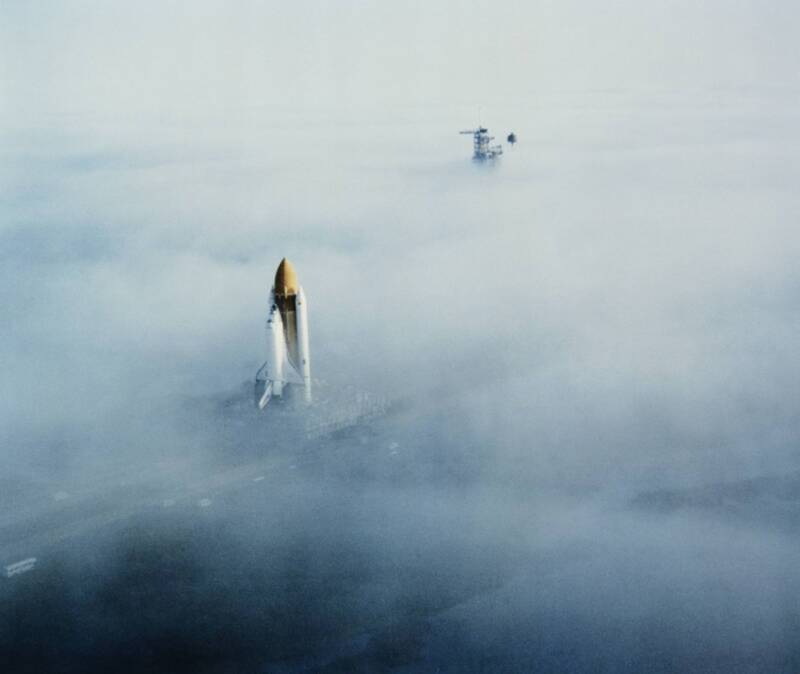
The Challenger shuttle is poised to take off at the Kennedy Space Center in Cape Canaveral, on the East coast of Florida. The cold weather fatally jeopardized the mission.

This is a closer look at the Challenger spacecraft before its final journey with the huge service structure that astronauts used to board the spaceship.

The seven crew members are seen here taking their final steps on Earth. The visible joy on their faces soon gave way to terror miles above the Earth.
The Challenger Bursts Into Flames
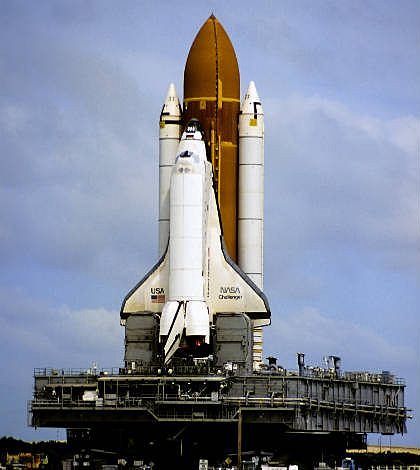
Having departed the Earth at 11:38 am, the Challenger explosion took place 1 minute and 13 seconds later. This image shows the shuttle intact on its very short flight.

Above, you can see a lone rocket booster speeding away on the right of the picture. The rest of the spacecraft is enveloped in a cloud of smoke and fire.

Contrary to what most believe, the orbiter never exploded. The massive fire was a result of the leaking fuel and hot gases. The spacecraft disintegrated and tore apart further due to drag forces.
People Were In Disbelief Over The Challenger Explosion
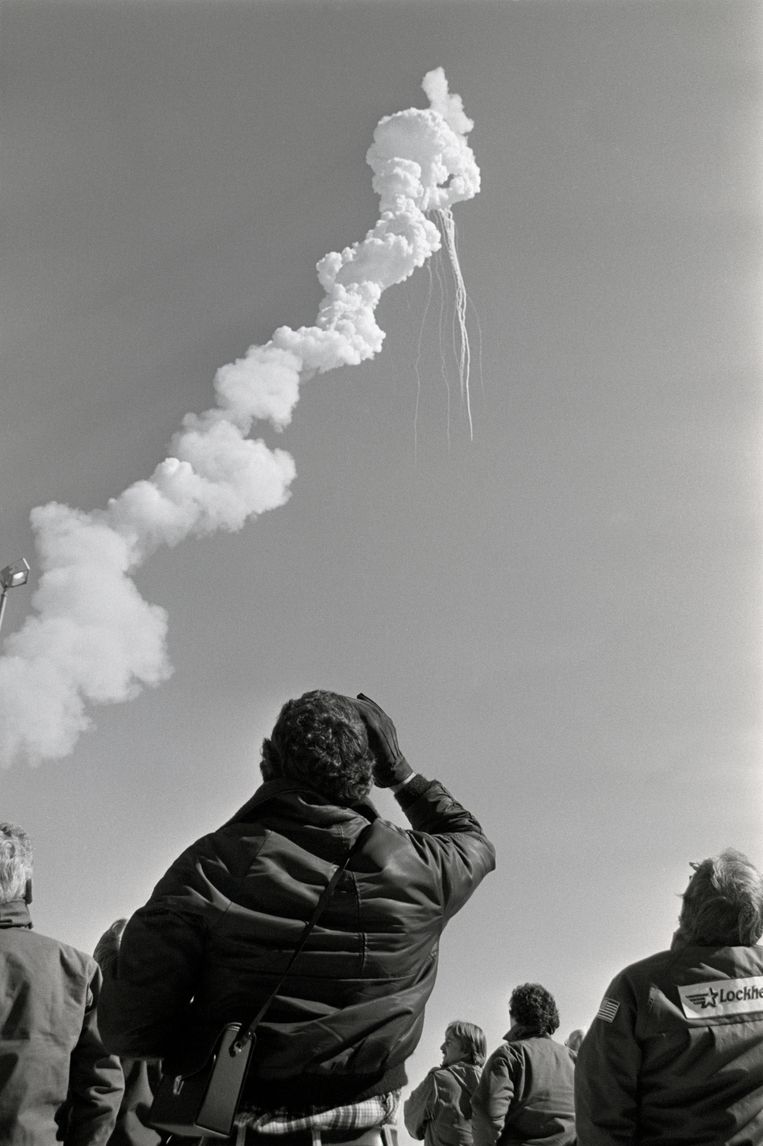
Space enthusiasts, colleagues, and family members who gathered at the launch site had to observe the catastrophe with their own eyes.

Horrified spectators could not contain their emotions as they feared the worst.
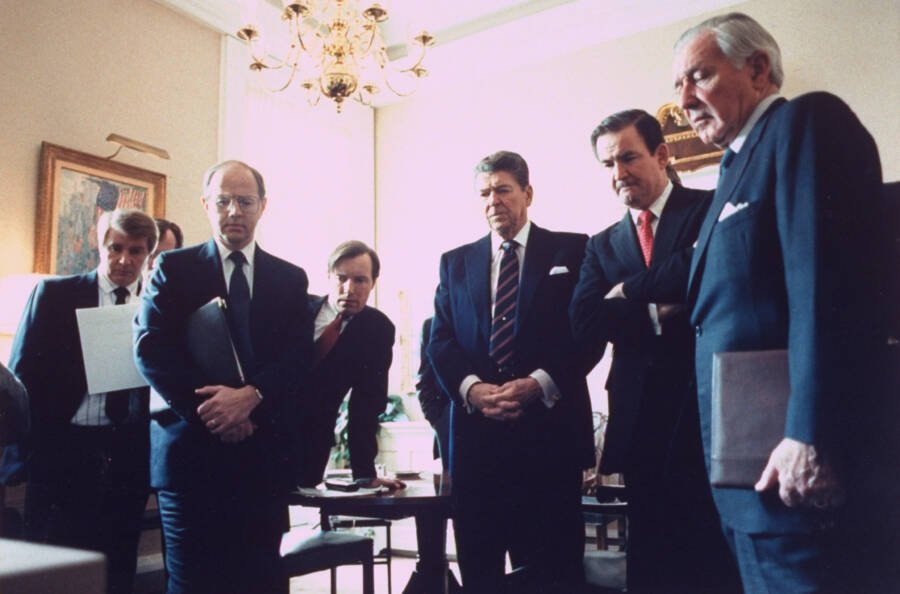
Ronald Reagan is visibly distressed as he watches the Challenger explosion with his colleagues live from the White House.
Most viewers did not watch the events live because they were at work. Networks cut the broadcast as the mission went wrong, so most people watched replays of the disaster. Special transmissions were arranged for schools so that students could see the historic moment of a teacher in space.
America Mourned The Challenger Explosion
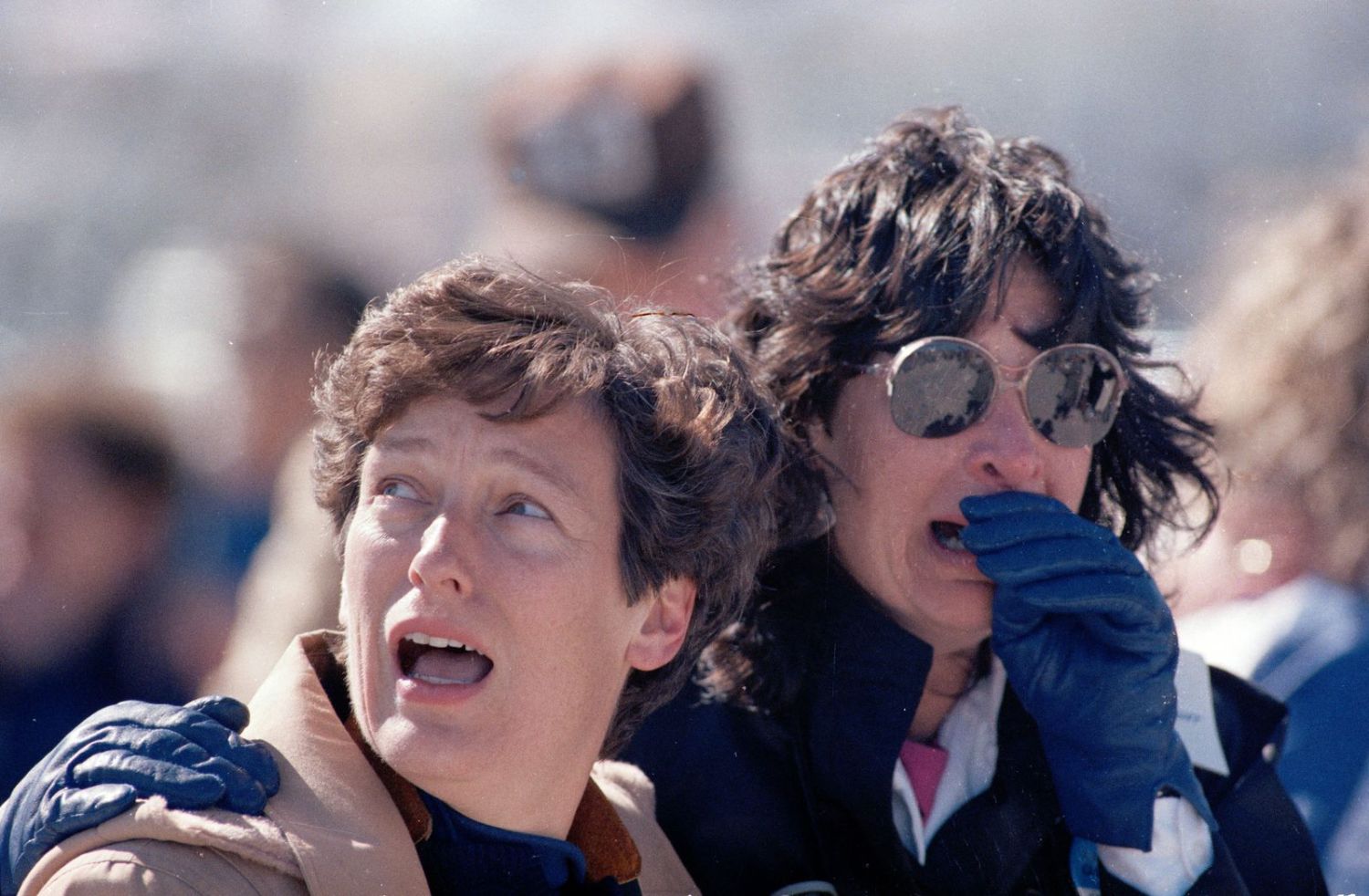
The expressions of people at the Kennedy Space Center summed up how America felt.

Flags waved at half-mast.
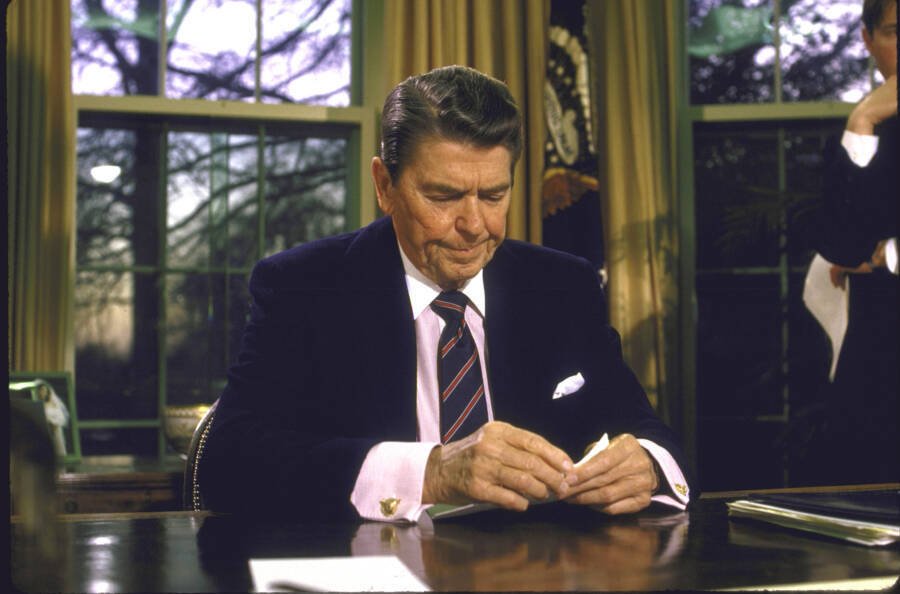
Ronald Reagan was due to address the nation on January 28th. In light of the Challenger explosion, his speech was entirely dedicated to the victims.
Wreckage & Remains Found

When remains of the astronauts were identifiable, they were returned to the families. Otherwise, authorities buried them at a memorial site.

A disturbing detail of the Challenger explosion was that the cockpit was not destroyed immediately. The shuttle crashed into the Atlantic Ocean at terminal velocity, with the impact killing the whole crew. The crew probably survived the disintegration, but as the shuttle fell to the Earth, they had no way of getting out. The shuttle did not have an escape mechanism because it was deemed an unnecessary expense. This could have saved the astronauts' lives.

The children and wife of the mission commander Francis Scobee are pictured in attendance at the funeral service. Ronald Reagan is sitting on the left.

The Florida sky was peaceful after the Challenger explosion and showed no signs of what recently unfolded.

Remains from the shuttle were extracted from the Atlantic Ocean. With help from the US Navy, close to 5,000 pieces weighing 250,000 pounds in total were found after the crash.

Fish swim by a submerged piece of wreckage.
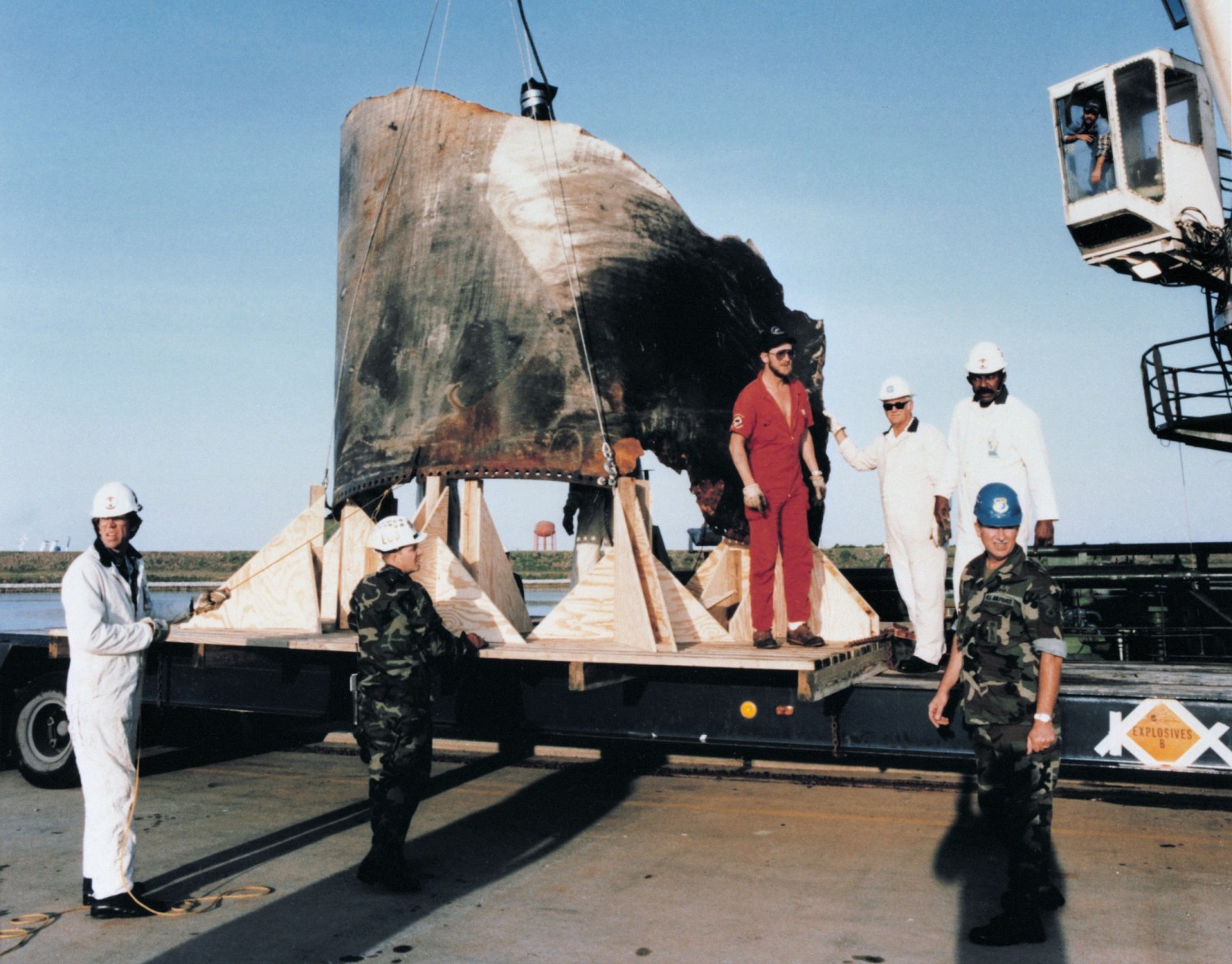
One of the shuttle's panels bearing the words "United States" is prepared for transport.
The Challenger Explosion: Not NASA's Last Tragedy
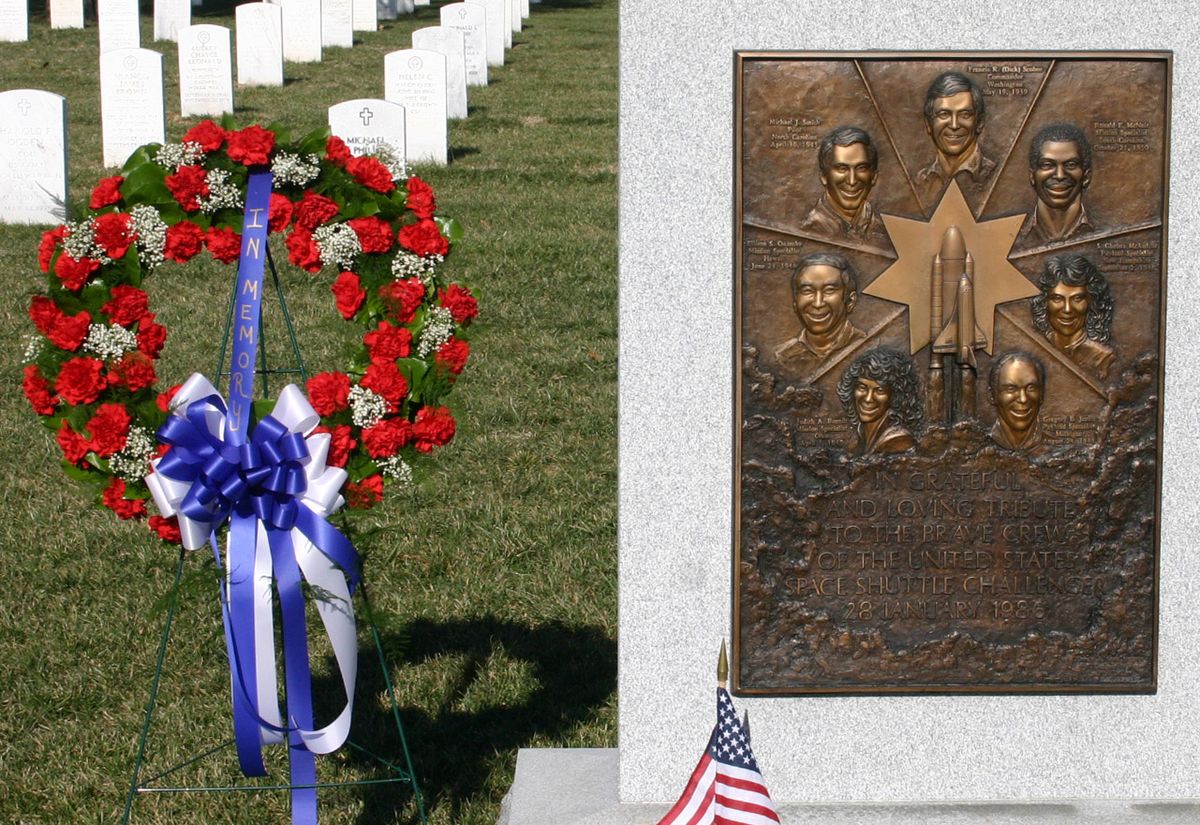
Sadly, the Challenger explosion was followed by an equally deadly accident that broke hearts again. The Columbia space shuttle broke apart upon re-entry into the Earth's atmosphere in February 2003. The cause was loose insulation from the shuttle damaging the spacecraft's wing. All seven crew members lost their lives.
This is the Challenger memorial site in Arlington, Texas, on the 20th anniversary of the accident.

The Challenger explosion is a crucial case study for the field of engineering. It demonstrates how mismanagement, poor communication, and refusal to listen to experts can lead to the loss of life. NASA could have postponed the mission to avoid the tragedy altogether had the engineers' concerns been considered.

With an average citizen involved, this project inspired a whole country. Yet, in the end, the horrific explosion traumatized millions. Seventeen years later, the Columbia shuttle proved that humans in space are still vulnerable, even with the finest modern technology. These incidents will stay firmly in the minds of future astronauts and engineers.



